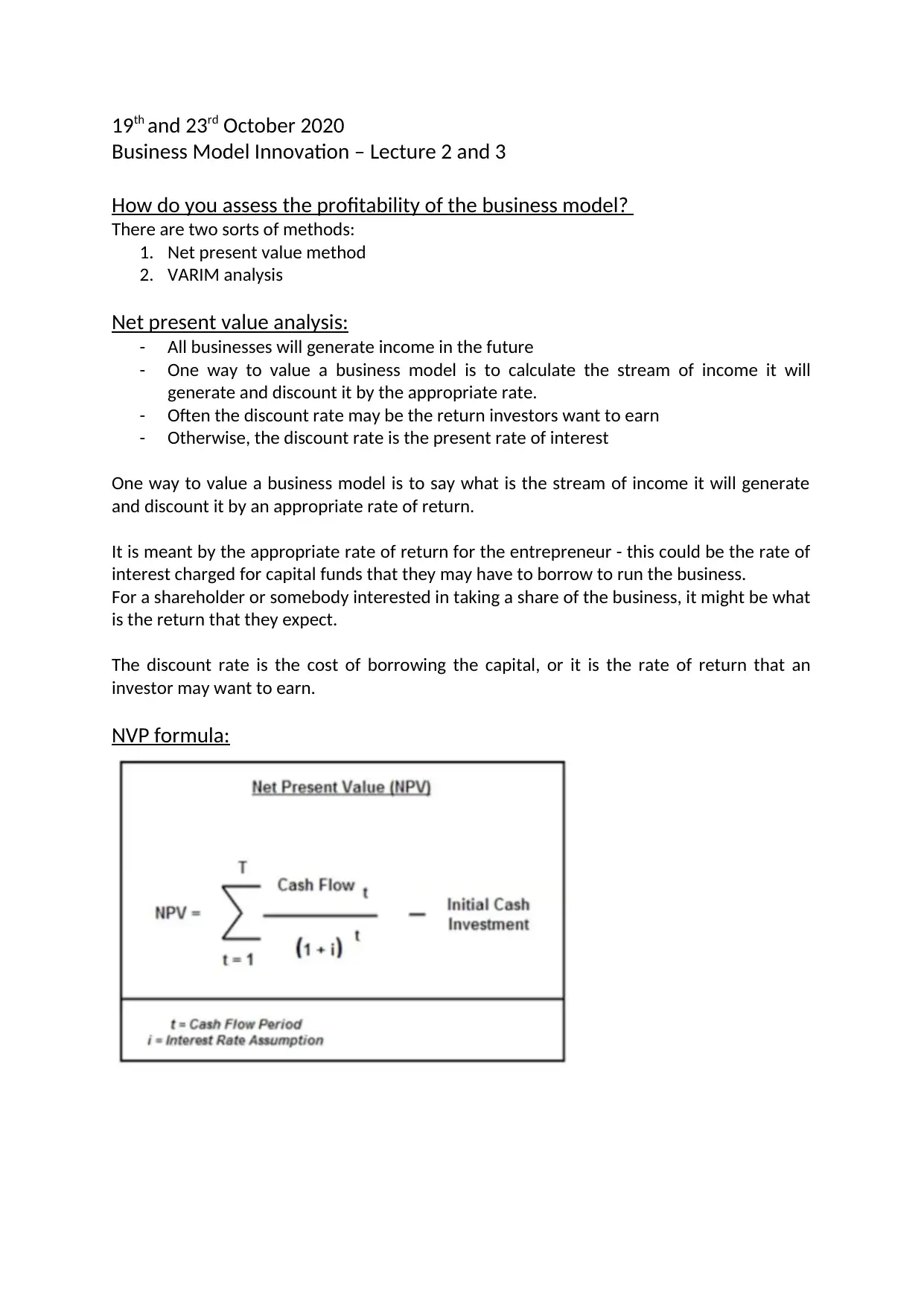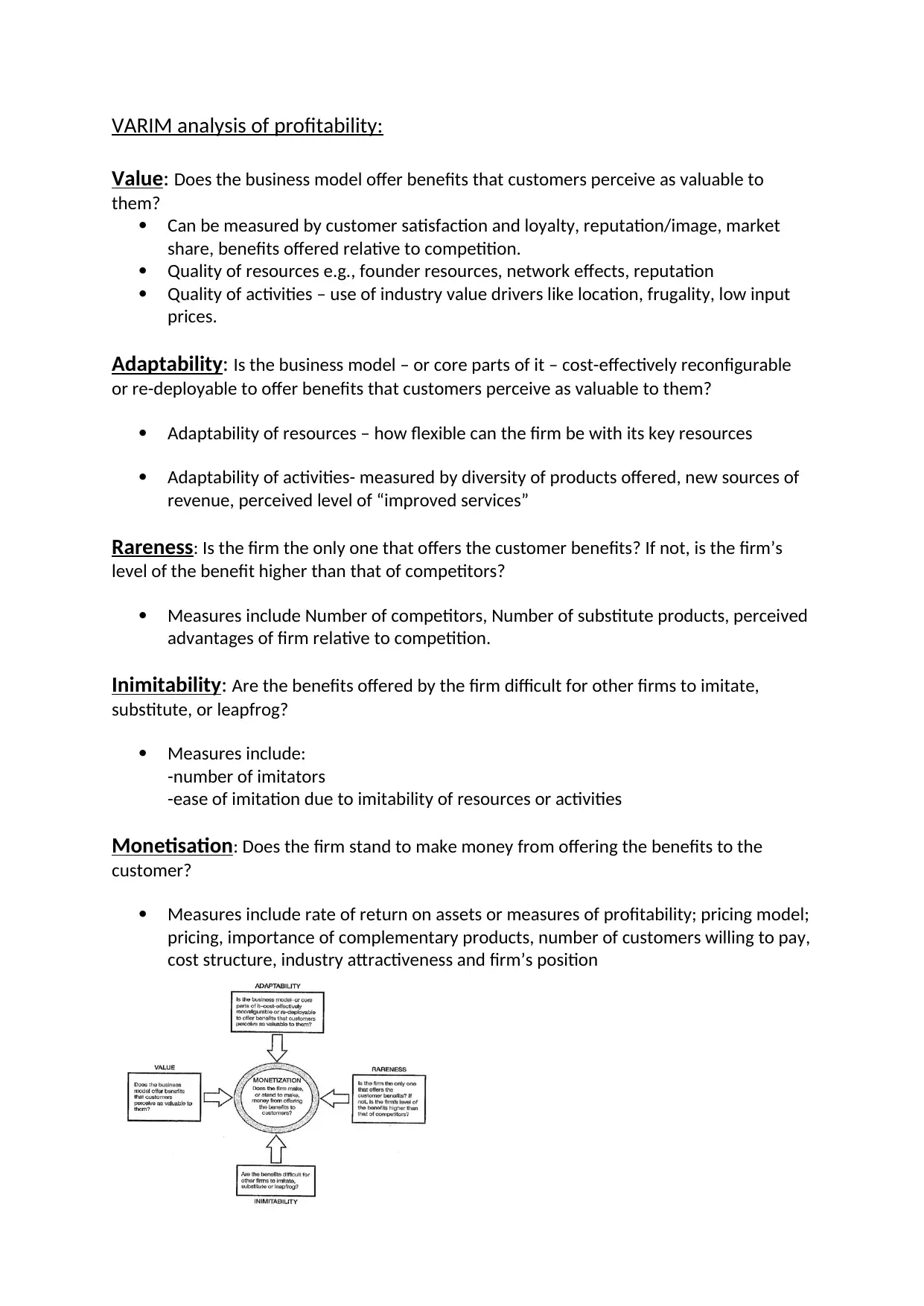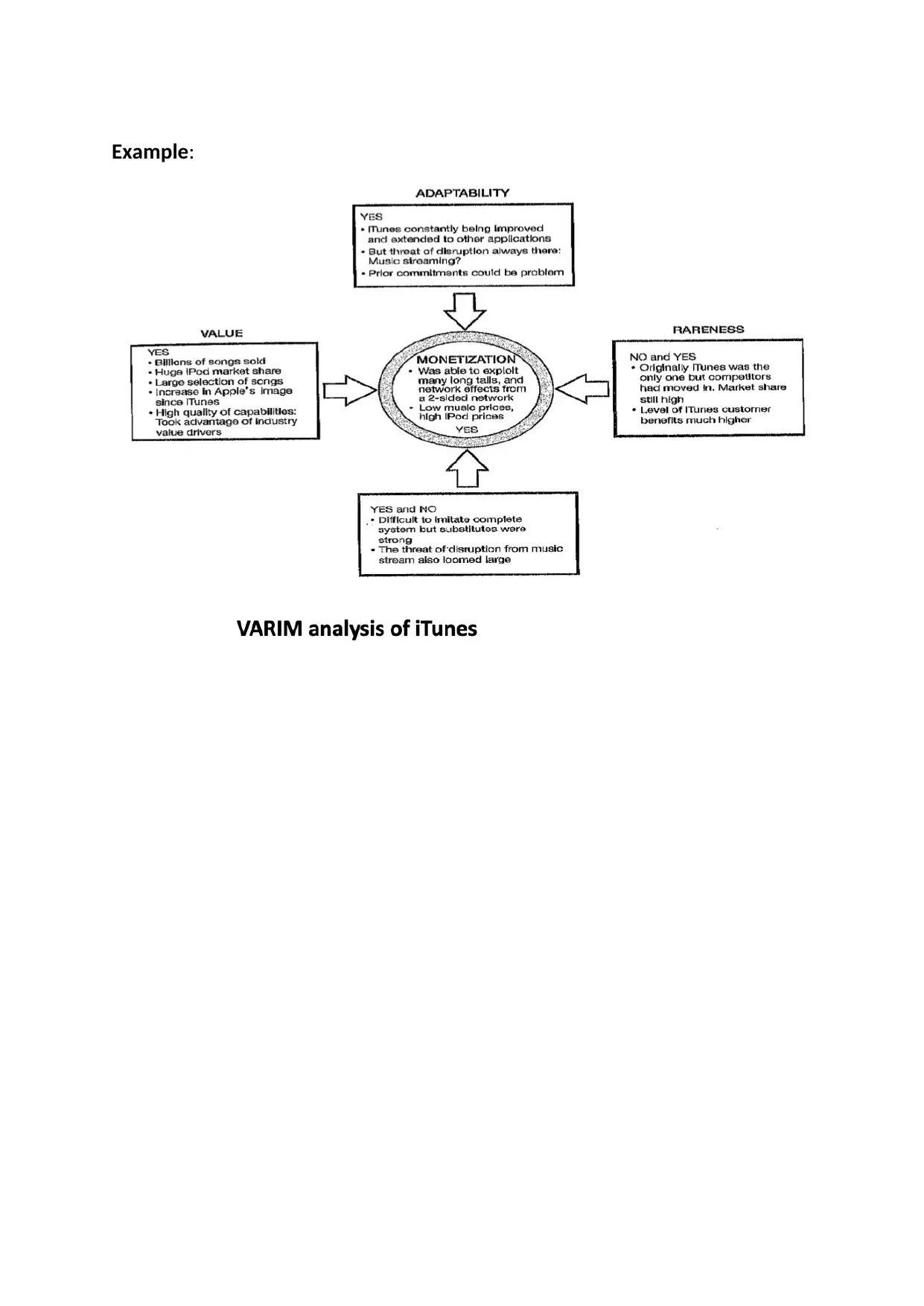Assessing Business Model Profitability: NPV and VARIM Analysis Report
VerifiedAdded on 2020/12/01
|4
|784
|69
Report
AI Summary
This report analyzes methods for assessing the profitability of a business model, focusing on two primary techniques: Net Present Value (NPV) and VARIM analysis. The report explains how NPV is used to calculate the stream of income a business will generate and discount it by an appropriate rate, detailing its application in valuing businesses at different stages (start-up, scale-up, and exit). It also highlights the drawbacks of NPV, such as high data requirements and a static notion of value. The report then introduces VARIM analysis, which offers a more dynamic approach by evaluating the value, adaptability, rareness, inimitability, and monetization of a business model. Each component of VARIM is defined, with specific measures provided for each, such as customer satisfaction, flexibility of resources, number of competitors, and rate of return. The report provides an overview of how to assess profitability, and valuation of a business model, offering key insights into making informed business decisions.
1 out of 4











![[object Object]](/_next/static/media/star-bottom.7253800d.svg)